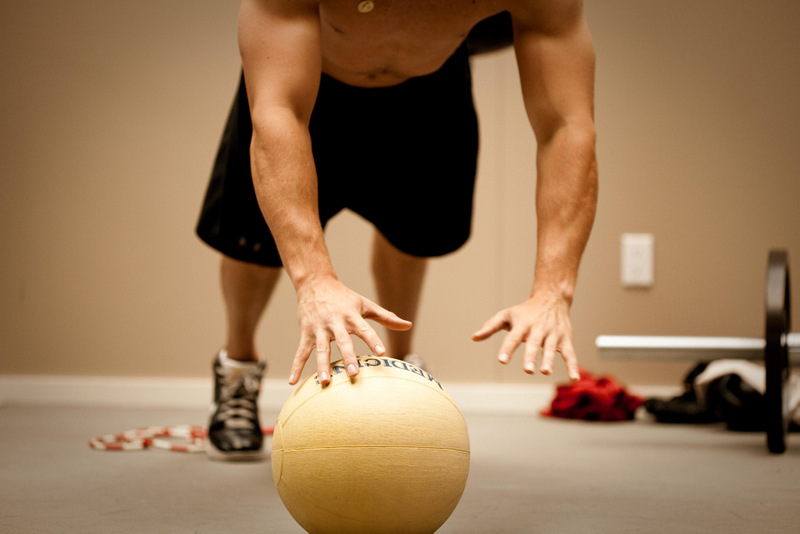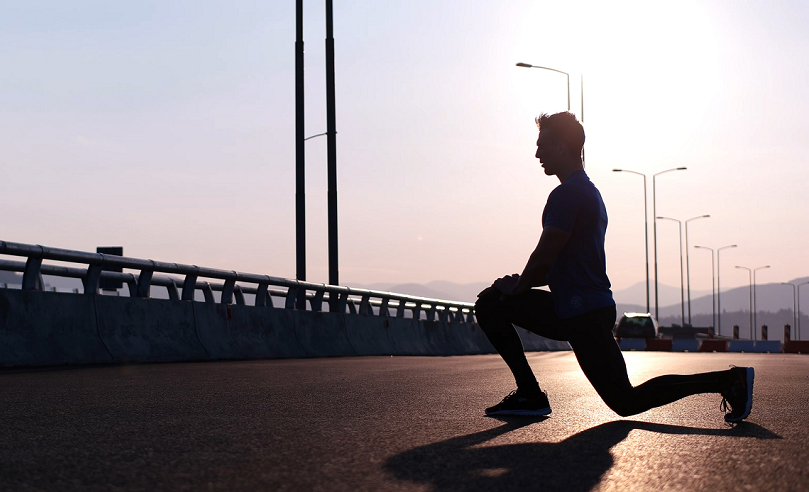Want to know the easiest trick in the book for looking confident and put together? It has nothing to do with what you’re wearing or what your job is . . . it’s simply in the way you stand. Good posture where your shoulders are back, your spine is tall and straight, you hold your head high and astute, well there’s simply nothing like it. Not only do your give off a stronger, more confident vibe, but you actually benefit your overall health too.
What are the consequences of bad posture?
So you slump a little when you sit for long periods of time, is it really that bad? Overtime, absolutely. Posture can deteriorate quickly when not reinforced with healthy practice – this results in lower back and neck pain, reduced blood circulation, diminished breathing, poor digestion, and even heart problems. Science has shown the effects of good and bad posture including in one 2003 study which found that intestinal motility of gas when digesting was faster in an upright and straight body position. A separate 2006 study revealed significantly decreased lung capacity and respiratory flow in participants who sat in a slumped position, and 2015 research out of Iran found office workers who suffered from neck pain had a more severe improper posture than others.
Your spine’s natural curve can become deformed with prolonged bad posture from the pressure of sitting with rounded shoulders. As you hunch forward, your neck is inclined to jut forward as well, placing your head and neck in front of your shoulders instead of aligned straight with them. This is called Forward Head Syndrome and is becoming more and more common among younger generations of people who grow up staring at computer screens and mobile devices.
The further your neck and head fall forward, out of line with your spine, the more strain they place on the connective tissues holding everything in place. As gravity is pulling you towards the earth, spending your days with your head and neck sliding forward actually adds abnormal leverage to the cervical spine, inhibiting range of motion and proper spinal function. Compression on your vertebrae discs can result in painful bulging and pinched nerves, and the strain placed on adjacent muscles, tendons, and ligaments can cause painful inflammation and achiness too.
What can I do to reverse my bad posture?
The good news about bad posture is that it’s not a medical condition but rather a bad habit – and the thing about bad habits is that they can always be reversed. Simple body awareness combined with a few exercises, lifestyle hacks, and even a dash of technology can have you sitting up straight in no time. Check out these 10 clever ways for reversing bad posture:
Lift Weights
 Lifting weights is probably already on your daily digest so check this posture pointer off the list, but make sure that you’re committing to lifts which strengthen your upper back, reinforce your spine, and build up a strong core to support upright sitting. Deadlifts have been shown to sturdy the spine while dumbbell squats and planks work your leg and core muscles. External rotation exercises with free weights that strengthen the rotator cuff are great for shoulder stability, while seated cable rows target the trapezius muscles.
Lifting weights is probably already on your daily digest so check this posture pointer off the list, but make sure that you’re committing to lifts which strengthen your upper back, reinforce your spine, and build up a strong core to support upright sitting. Deadlifts have been shown to sturdy the spine while dumbbell squats and planks work your leg and core muscles. External rotation exercises with free weights that strengthen the rotator cuff are great for shoulder stability, while seated cable rows target the trapezius muscles.
Stretch
Sore, tight back, neck and shoulder muscles are more likely to induce a slumping, rounded posture than limber, elastic muscles. How do you increase your muscle and joint flexibility, including in your back? It’s easy, with stretching. Static stretching after a workout can re-lengthen muscles, flush out waste by-products and lactic acid, as well as reorganize tissue fibers that became jumbled during your rigorous workout. In addition to stretching leg muscles post workout in the gym, stretching out your back, neck, and shoulder muscles (with stretches held at least 20 seconds at a time) can boost good posture outside of the gym.
Breathe Deeply
Try inhaling a long, juice breath in while slouched over on the couch. Pretty tough, right? When your spine is unnaturally curved and your whole upper shoulder and head region is moved forward, the pressure around your thoracic region can greatly limit the ability for you to completely fill your lungs with air. Practicing deep breathing techniques throughout the day then can propel your body into better posture. Sitting in a chair, spine straight and feet flat to the ground, take a long breath in and completely fill your lungs. Exhale slowly and feel your shoulders drop down and back. Repeat five to ten times. In addition to positively adjusting your posture, regular deep breathing can also help you concentrate better and relax.
Exercise
Not just any exercise will reverse bad posture habits. Exercises to specifically stretch and strengthen the neck, shoulder, and chest muscles play the most effective roles in making it easier for your body to be a rest in an upright and straight position.A chest exercise can literally involve just you, standing in a doorway with arms bent, bracing yourself on either side. Lean in, leaving your arms up against the sides and feel the stretch across your chest. Pull-ups are also good for strengthening rhomboid muscles which can help keep shoulders from curving forward.
Balance
If your center of gravity is out of whack because your posture has degenerated, balancing can become a very difficult task.
 Reverse the psychology then and practice balance exercises to encourage a stronger, taller posture. Exercising on a stability ball, for example, incorporates coordination, strength training, and balance – take it a step further and use a stability ball at home to sit on while working, reading, or watching TV.
Reverse the psychology then and practice balance exercises to encourage a stronger, taller posture. Exercising on a stability ball, for example, incorporates coordination, strength training, and balance – take it a step further and use a stability ball at home to sit on while working, reading, or watching TV.
Your body will be required to sit taller and straighter to remain balanced and upright. Same goes for exercising with a balance disk (wobble cushion) or walking a slackline.
Walk Better
This might sound ambiguous but the fact of the matter is that a lot of bad posture is linked to poor pronation and gait. If the way you walk, play, and workout is misaligned or mechanically unsound due to problems with your foot or leg, you’ll experience cascading issues with your knees, hips, and back. In addition to exercises and physical therapy which can correct bad body mechanics, orthotic aids or stabilizing braces may help. Pelvic tilt from overpronation and foot pain associated with plantar fasciitis, hammer toe, or metatarsalgia may be aided with arch supports, a hammer toe crest pad, or metatarsal cushions. Your entire musculoskeletal structure is dependent on coordinated movements from your head to your toe. Improving the way you walk and run can have a lasting effect on your posture.
Uncross Your Legs
Crossing your legs with bad posture is actually like a bad habit on top of your bad habit. What happens when you cross your legs is that it throws your hips out of balance, tilting them to one side and causing added strain to the spine and back muscles. A 2014 study even found that sitting crossed legged for more than 3 hours a day could cause shoulder inclination (forward hunch), pelvic tilt, and forward head posture. If your tendency when sitting, especially in a meeting or when watching TV for example, is to cross one leg over the other, be extra body aware of this effect on your posture. Sitting with both feet to the ground not only balances your pelvic bones, but it makes straightening the spine and pulling the shoulders back easier as well.
Try an App
Even when it comes to practicing good posture, there’s an app for that. Depending on what type of device(s) you have, smartphone, computer, or tablet, apps like Perfect Posture Workout (iOS) and Perfect Posture (Android) might be a nifty (albeit annoying) solution to reminding yourself throughout the day to practice good posture. Perfect Posture Workout works best when you slip your phone into a shirt pocket – it vibrates when it can tell that you are slouching. Similarly, Perfect Posture educates you on holding your phone vertically when using it and alerts you to potential neck craning.
Stress Less
 Easier said than done, right? So often stress and anxiety can manifest themselves as tense shoulder and neck pain as well as headaches, causing you to pull forward and slump when sitting and standing.
Easier said than done, right? So often stress and anxiety can manifest themselves as tense shoulder and neck pain as well as headaches, causing you to pull forward and slump when sitting and standing.
Try Yoga
Before you say that yoga is for women or you don’t have time, hear me out. Yoga is like the grand slam of reversing bad posture, integrating three main components that promote spine lengthening and strengthening – stretching, deep breathing, and mindfulness. We’ve already talked about how the first two, stretching and breathing, can help reverse bad posture, but what about mindfulness? Forget the hippy dippy meditation stuff you’re worried about and ask yourself one question, “If I’m not aware of my bad posture all the time, will I really be able to reverse it?”. Mind-body awareness that comes with the meditative and calming practice of yoga transcends into your day to day life, driving innate reminders home again and again to sit up straight, bring the shoulders back, and hold your head high.
Bad posture typically accompanies activities like a boring desk job or spending loads of time staring at mobile device screens and avoiding real conversations with other people. If this sounds like you, prioritizing good posture may have a greater effect than you’re hoping for. A boost in your mood and confidence can bleed into your overall lifestyle, leading you to get out more, go on adventures, take more chances, and see the world from a new perspective.
About the Author
 Joe Fleming is the President at ViveHealth.com. Interested in all things related to living a healthy lifestyle, he enjoys sharing and expressing his passion through writing. Working to motivate others and defeat aging stereotypes, Joe uses his writing to help all people overcome the obstacles of life. Covering topics that range from physical health, wellness, and aging all the way to social, news, and inspirational pieces…the goal is help others “rebel against age”.
Joe Fleming is the President at ViveHealth.com. Interested in all things related to living a healthy lifestyle, he enjoys sharing and expressing his passion through writing. Working to motivate others and defeat aging stereotypes, Joe uses his writing to help all people overcome the obstacles of life. Covering topics that range from physical health, wellness, and aging all the way to social, news, and inspirational pieces…the goal is help others “rebel against age”.

